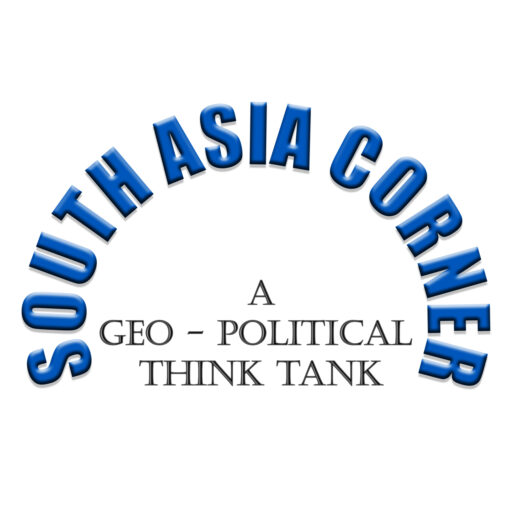Introduction
The Chinese One-Child Policy, implemented in 1979, aimed to control population growth and mitigate the strain on resources and the environment. This essay explores the impact of this policy on the demography of Chinese society, the population dynamics, and the potential challenges it presents for China’s future development. The policy’s effect on the equilibrium of an ageing population, the impending worker shortage, and the burden of an ageing military force will be discussed, along with its potential consequences for industrial production and China’s aspirations of becoming a military superpower.

Demographic Impact of the One-Child Policy
The One-Child Policy led to a significant decrease in China’s population growth rate. It successfully curbed the country’s rapid population expansion and resulted in unintended consequences. The policy led to a stark decline in the number of children born, resulting in a significant demographic shift. China now faces an imbalanced population structure, with a larger elderly population and a smaller working-age population. This demographic transition poses various challenges to China’s social and economic stability.
Population Imbalance and Ageing Population
The one-child limit resulted in a decline in China’s fertility rate, causing a significant increase in the proportion of elderly citizens. The Chinese Population is ageing at an unprecedented rate, creating an imbalance between the young and the elderly. This demographic shift burdens the younger generation with the responsibility of caring for a growing elderly population, straining social welfare systems and healthcare resources. Additionally, the ageing Population places a heavy burden on the labour force and pension systems, leading to economic challenges in the long run.
Worker Shortage and Industrial Production Decline
China’s rapid economic growth has been fueled, in part, by its large and relatively inexpensive labour force. However, the one-child policy has disrupted this demographic advantage. As the working-age Population diminishes, China is heading towards a significant worker shortage. This shortage will affect the manufacturing and service sectors and hinder future economic growth and industrial production. The declining workforce will likely lead to increased labour costs, reduced productivity, and limited innovation, challenging China’s position as the global manufacturing hub.
Military Burden and National Security
China’s ambitions of becoming a military superpower rely heavily on the availability of a strong and capable workforce. However, the one-child policy’s long-term impact on demographics challenges China’s military capabilities. The shrinking pool of potential recruits will strain the military’s ability to maintain sufficient soldiers, officers, pilots, and ship crews. Moreover, the burden of an ageing military force may result in reduced agility, increased healthcare costs, and potential limitations on combat effectiveness. China’s aspirations of military dominance may be compromised due to the demographic constraints imposed by the one-child policy.

Conclusion
The Chinese One-Child Policy has had significant and far-reaching consequences for China’s demography, population dynamics, and future prospects. The policy successfully controlled population growth, leading to an ageing population, an imbalanced workforce, and potential challenges for China’s military ambitions and industrial production. As China faces the burden of an ageing society, it will be crucial for the government to implement strategies to address the worker shortage, promote technological innovation, and ensure the well-being of the elderly Population. Failure to adapt to these challenges may hinder China’s economic growth and limit its ability to achieve its desired status as a global military superpower.
The Chinese One-Child Policy has profoundly impacted China’s demography, population dynamics, and future prospects. While the policy succeeded in controlling population growth, it also created unintended consequences that posed significant challenges to China’s social, economic, and military aspirations. The imbalanced demographic structure, with a rapidly ageing population and a diminishing workforce, threatens the equilibrium of an ageing society and presents obstacles to China’s power projection in the coming years.
The policy’s impact on the demographic composition of Chinese society has created a manpower dichotomy that will increasingly restrict China’s ability to assert itself as a regional power. The demographic imbalances resulting from the One-Child Policy will hinder China’s military capabilities and limit its potential threat to the region. China’s ambitious goals of flexing its muscle in the South China Sea and the Indian Ocean region are likely to be dampened by the burden of an ageing workforce.
China’s wishful thought of engaging in military conflicts, particularly with India, seems far from attainable. The ageing workhorses of China’s military would struggle to withstand the demands of modern warfare. With a greater proportion of aged soldiers, officers, pilots, and ship crew, China would face severe logistical challenges and increased healthcare costs. These factors would significantly impede China’s ability to engage in sustained military operations and pose a substantial threat to regional stability.
Furthermore, the declining industrial production resulting from the worker shortage poses additional obstacles to China’s future trajectory. As the workforce dwindles, China’s position as the global manufacturing hub is at risk. The rising labour costs and reduced productivity could erode China’s economic competitiveness and impede its ability to sustain rapid economic growth. Without a vibrant and productive workforce, China may struggle to maintain its economic momentum and fulfil its aspirations of becoming a global economic powerhouse.
Addressing the challenges posed by the demographic consequences of the One-Child Policy will require comprehensive and strategic measures. China must focus on innovative solutions to address the worker shortage, such as technological advancements and automation in industries. Moreover, the government should prioritize social welfare reforms and healthcare systems to ensure the well-being and support of the elderly Population. By investing in education, skill development, and promoting entrepreneurship, China can mitigate the potential economic repercussions of an ageing society and foster a culture of innovation.
In conclusion, the Chinese One-Child Policy has had far-reaching effects on China’s demography and population dynamics, resulting in an imbalanced demographic structure and significant challenges for China’s future development. The policy’s implications extend beyond population control and have consequences for China’s economic growth, military capabilities, and regional power projection. By proactively addressing these challenges, China can navigate the demographic obstacles and strive towards a more sustainable and balanced future. However, failure to adapt and find effective solutions may tip China off the cliff, hindering its potential to emerge as a global power and undermining its aspirations for military dominance and industrial prowess.
Bibliography:
- Cai, Y. (2016). China’s below-replacement fertility: Government policy or socioeconomic development? Population and Development Review, 42(3), 595-612.
- Lee, J. Z., & Wang, F. (Eds.). (2014). One quarter of humanity: Malthusian mythology and Chinese realities, 1700-2000. Harvard University Press.
- Li, J., & Wang, F. (2020). China’s long-term demographic challenges: An overview of recent trends and future prospects. Journal of Population Research, 37(1), 1-19.
- Qi, X. (2015). China’s demographic history and future challenges. Science, 346(6206), 9-11.
- Wang, F., Cai, Y., & Gu, B. (2017). Population, policy, and politics: How will history judge China’s one-child policy? Population and Development Review, 43(S1), 151-166.






